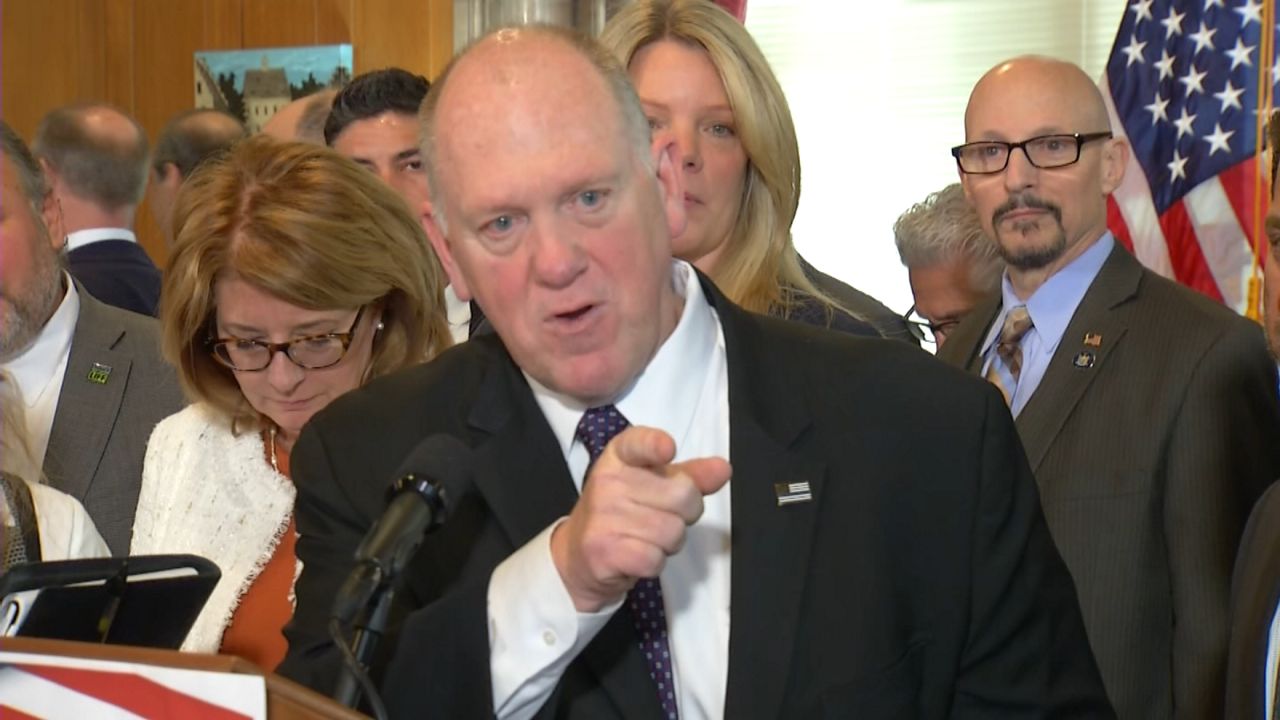Mayor Eric Adams released his $109.4 billion preliminary budget for Fiscal Year 2025 on Tuesday, focusing on tackling the ongoing influx of migrants.
What You Need To Know
- Mayor Eric Adams revealed a budget proposal of $109.4 billion on Tuesday
- The budget address was supposed to include another round of citywide budget cuts but spared some agencies amid higher revenue and lower migrant costs
- Adams said that youth programming, social services, department of the aging and libraries would be spared this time around
- The mayor announced that the city was able to significantly reduce the budget gap of $7.1 billion with over $6 billion in savings
“The growing asylum seeker crisis, COVID-19 stimulus funding drying up, tax revenue growth slowing, and unsettled labor contracts that we inherited widened the FY25 budget gap to a record level,” Adams said in a statement. “But, with responsible and effective management, we have been able to provide care for asylum seekers and balance the budget — without unduly burdening New Yorkers with a penny in tax hikes or massive service reductions, and without laying off a single city worker.”
Ahead of the announcement, Adams announced reversals of cuts to public safety, sanitation, education and youth programs and city libraries.
The mayor on Tuesday said the budget was able to be balanced because of steps the city took early in the budget process to reduce costs, like a hiring freeze and the Program to Eliminate the Gap (PEG) that called on city agencies to reduce spending, as well as an unexpectedly strong economy.
Adams has frequently brought attention to how the migrant crisis has been draining the city’s resources, and once again called for more help from the state and the federal government.
He said if the state can help the city with migrant funding, the city can cancel the PEG savings outlooked for April and avoid the possibility of service reductions.
Adams said he has been to Washington, D.C. several times to advocate for New Yorkers about the crisis.
“We cannot wait endlessly for the federal government to do their part,” he said. “If they won’t act, we must.”
Adams’ strategy for the crisis is a two-part process that includes helping migrants in the city’s care in their next steps within their journey and providing more efficient services to those within the city’s care.
He also said the city overestimated costs to help arriving migrants by nearly $2 billion.
According to Adams, the city will care for migrants more efficiently by modifying services and staffing models at its Humanitarian Emergency Response and Relief Centers, or HERRCs. They will also transition from HERRCs into a new model of care managed by nonprofit service providers. The city is also negotiating rates and rebidding shelter contracts run by for-profit organizations.
With the new measures taken by the administration, the city plans to reduce the costs for the migrant crisis from $12.25 billion to $10.6 billion from fiscal year 2023 to fiscal year 2025, the city said in a press release.
The city has provided care for more than 170,700 migrants, and more than 68,000 of them are still in the city’s care, according to a press release.
Adams also delivered some good news about the city’s economy.
“Unanticipated economic growth in 2023 generated better than expected tax revenues,” he said.
The city is set to rake in nearly $3 billion in revenue over the next two years.
Adams also noted that since last June, the city has been able to save more than $6 billion through reductions and efficiencies.
The updated forecast was met with some optimism by councilmembers.
“Now we know how much money we have to work with, let’s restore some of our priorities and let’s start delivering for New Yorkers, that’s our job,” said City Councilman Justin Brannan, who chairs the council’s finance committee.
News about significant revenues was expected by the City Council.
“This is vindication for all the people you guys don’t know that work really hard on this stuff to come up with the numbers to project what’s going to happen,” said Brannan. “We’re not here to dunk on the mayor, we’re here to get to work.”
Adam’s budget reveal is the first step in a lengthy budget cycle that ends in June.








_Dnt_NYIC_Immigration_Clean)
_PKG_Churches_Sheltering_Migrants_CLEAN_132766675_0)